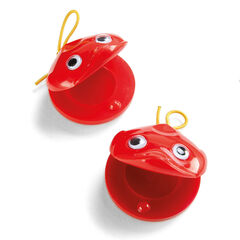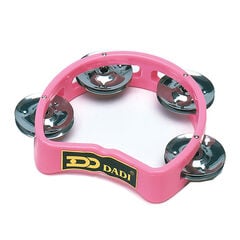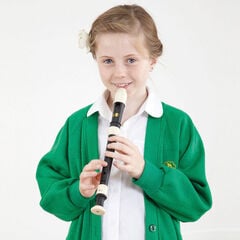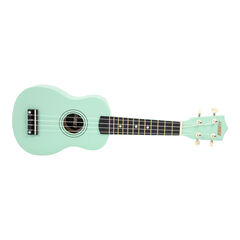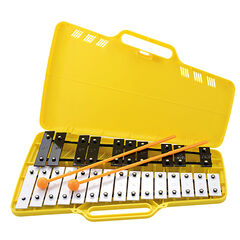Many people feel they don’t have the knowledge to teach music, but here are some simple ideas that are great fun, fantastic for relieving stress and for helping children and yourself ‘switch off’ from business as usual at home.
Percussion instruments
Percussion instruments such as hand drums, shakers, tambourines and castanets are a great place to start. The instruments shown below come in different sizes and cost from £2.99. However, if you can’t get hold of real instruments, all kinds of things can be used. Drums could be pans, boxes, washing up bowls for example with a wooden spoon as a beater. Shakers can be made by adding dry ingredients, such as rice, pasta or sugar, to a sealable container.
Beat and Rhythm
Begin by making a beat. This is a constant rhythm. You set the tempo and see if your child can follow it. Count 1, 2, 3, 4 and repeat. Make the beat faster and slower and also try tapping or shaking your instrument harder and softer.
Play a song and see if you can find the beat to tap along to. You have to ‘feel’ what it should be. Most people will instinctively tap their feet or nod their head to the beat.
Keeping to a beat is a good listening and motor skills activity and has also been linked to reading ability.
Next use your percussion instruments to practise tapping or shaking out a rhythm. The rhythm goes along with the beat but is about the flow of the music, so usually changes much more than the steady beat.
So in the first line of a song, for example, Twinkle Twinkle Little Star, there are 4 beats:
Twinkle twinkle little star
1 2 3 4
The rhythm comes from the words, so there 7 taps per 4 beats
Twinkle twinkle little star
1 2 3 4 5 6 7
One person can play the beat and one the rhythm. Again this is a great listening activity. Which does your child find easier to play – beat or rhythm?
If they find it very easy, try doing both at the same time, either using two beaters one in either hand or keeping the beat by tapping your feet and playing the rhythm on the instrument.
(Try tapping the beat and rhythm at the same time for yourself. If you are right-handed, it is much easier to keep the beat with your left hand and tap the rhythm with your right. It is almost impossible the other way round, even with a simple song like Twinkle Twinkle!)
Try other familiar songs. Nursery rhymes are great both to sing and to play along to and so important for young children to learn. The rhythm and rhyming skills they get from knowing them cannot be underestimated; they boost language, communication and memory too.
Some suggestions are:
- Hickory Dickory Dock
- Baa Baa Black Sheep
- 12345 Once I caught a Fish Alive
- Mary, Mary quite Contrary
- I’m a Little Teapot
- Mary Had a Little Lamb
- London Bridge is Falling Down
- Humpty Dumpty
- Hey Diddle Diddle the Cat and the Fiddle
Learn the ‘Dinner Train Chant’ together. It is great fun and the idea is to imitate the rhythm of a train. Try it with voices first, then add your percussion instruments.
“Coffee, coffee, coffee, coffee
Cheese and biscuits (x4)
Fruit and custard (x4)
Beef and carrot (x4)
Fish and Chips (x4)
Soooooouuuuuuup!”
Once you know it, get in a line and walk around chanting and playing like a moving train!
Listen to music together
How often do we take time to do this? Take turns to play your favourite songs to each other and really listen. This could be your change to really educate your children with proper music! (Radiohead or Kate Bush anyone?!)
There is also no better way to relieve anxiety than singing, so go ahead, at the top of your voices! Use a microphone or a hair brush to amplify the sound!
Or why not discover some new music together. Have you ever listened to Bhangra? It is so infectious, you can’t possibly stay still!
Play a tuned instrument
As part of a daily routine, I can think of no more wonderful activity than to spend 20 minutes a day learning a new instrument. If you are lucky enough to have one in your home already – fantastic – but if not, here are three fairly inexpensive suggestions:
-
Recorder
Recorders are a great first instrument to learn to read music with. They can be a little hard to listen to when children are first learning, but the benefits outweigh this (honestly!) And if you limit the practise to 15 to 20 minutes a day, then put them away it could work all round. They are also very cheap to buy.
As well as learning to play a tune and the fun and self-esteem that comes with it, recorders help children develop hand-eye coordination, fine motor skills, strong lungs and breath control.
The squeaks come when the holes are not covered properly and this is quite a challenging skill for little hands (especially keeping the thumb on the one at the back) which is why the first note learnt is B (cover top hole with pointer finger and back hole with thumb). There are many free recorder tutorials available online.
-
Ukulele
Ukuleles are incredibly popular in schools and have become even more so because of many pop artists using them – Twenty One Pilots, Billy Eilish etc.
They are great for children for many reasons. They are small, lightweight and easy to carry around. They only have 4 strings which are easy to press down. Chords are easy to learn and they can be adapted to play almost any song you can imagine.
They are also great fun and are one of the most inexpensive instruments available. Why not learn together?
Again, there are many tutorials for free, or at bargain rates, available online. You can also find versions of almost any song you can think of, adapted for the ukulele.
-
Glockenspiel
It is a real treat for children to get to play the glockenspiel at school (there are often not enough to go round) but not many people have them at home, which is a shame as they are a fantastic instrument.
The glockenspiel is suitable for absolute beginners (and the more gentle tones may be easier to cope with than many other instruments!) But they are also brilliant for children who are more musically able.
Children will enjoy working out familiar tunes by ear and/or could learn to read music. The notes are laid out in the same way as a piano or keyboard with white and black keys.
Search online for performances by the amazing Evelyn Glennie. She is truly inspirational.
For more learning at home ideas and inspiration click here










